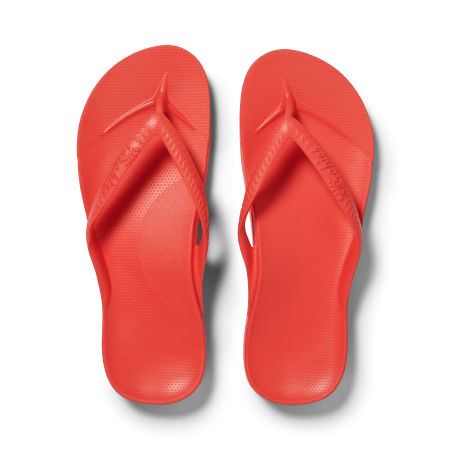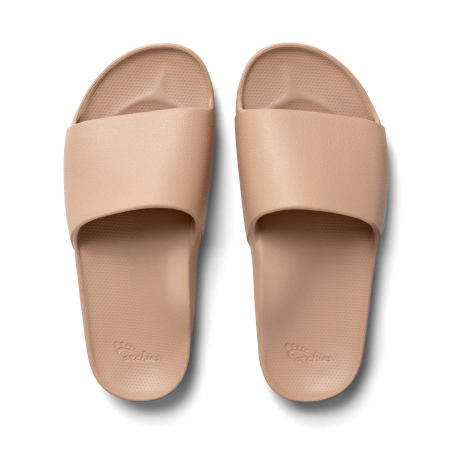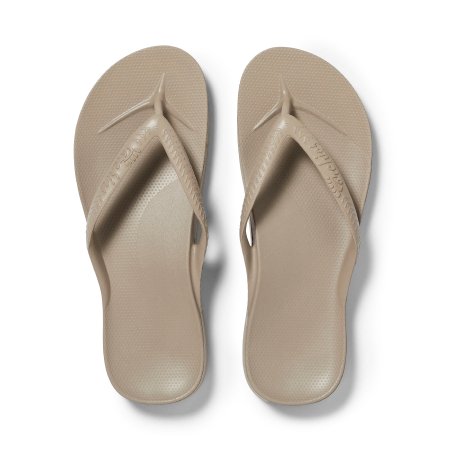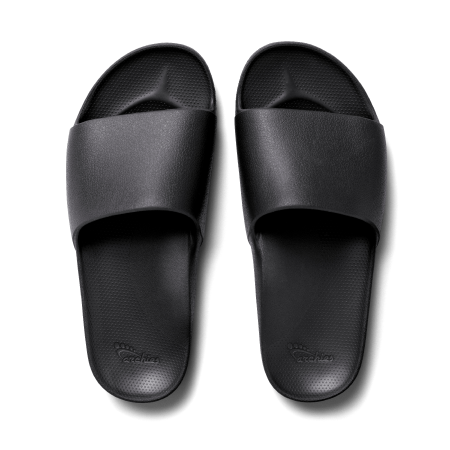What is Plantar Fasciitis and What To Do About It?
Overview
This article has been written to help teach you about what the plantar fascia is, how it functions, why it commonly becomes injured in the form of Plantar Fasciitis, how to diagnose the condition and what you can do if you have Plantar Fasciitis.
Introduction
Plantar Fasciitis is an overuse injury that causes degeneration to the plantar fascia. It is by far one of the most common causes of foot pain and is experienced by millions of people worldwide every day.
The plantar fascia is not a muscle, but connective tissue (like a tendon) that attaches the heel bone to the toes. As the plantar fascia is not a muscle itself, it does not directly produce movement in the foot, but it is the main structure responsible for creating the arch of the feet and therefore plays a pivotal role in protecting your feet from injury.
The plantar fascia functions to help lock the foot in a rigid position to be able to adequately withstand the forces of your foot contacting the ground and then assist to propel the foot forward. It is commonly injured when it is overused, when it is used abnormally or when it’s shock absorbing capacity has been reduced.
The condition is mistakenly reported as being inflammatory, however, despite what you may read, studies involving the tissue of those with the condition actually fail to show any inflammatory markers. Basically, the condition does not involve inflammation and this is well supported in the Sports Medicine and Podiatric Community (leaders in this field).
Onset
- Plantar Fasciitis can occur acutely in a specific incident such as walking and carrying heavy shopping or landing the foot awkwardly while running or walking.
- The condition can also occur gradually with pain coming on over a prolonged period of time.
- It may occur after doing a decent amount of walking in flat, non-supportive footwear or footwear that lacks shock absorbing capacity such as flat sandals, flip-flops without arch support, casual sneakers, dress or work shoes.
- The condition is very common in those who run on hard surfaces. In many cases, runners go to a podiatrist questioning how they hadn’t noticed the pain during their run. This is because the plantar fascia acts as the foot’s shock absorber, and simultaneously supports the arch, so adding too much stress over time (such as on a long run) can result in small tears. While painless in the moment, once the body cools down, the pain can become apparent.
Symptoms
- The condition can be very painful and may feel like a stone bruise or a sharp stabbing pain on the inside of heel where it joins to the arch.
- While the plantar fascia extends all the way to the toes, Plantar Fasciitis is normally very specific in its location and it is most common to have pain limited to the inside heel area.
- Pain that extends along the entire arch and is not focused in the inside of the heel is not generally considered a feature of Plantar Fasciitis.
- The pain of Plantar Fasciitis is often worse with inactivity but will improve with warm up. For example - The pain is usually worse with the first steps in the morning and will dissipate as the individual moves around. The pain can come back later in the day after sitting for an extensive period of time, or spending too much time standing.
- Individuals are also much more likely to report feeling pain right at the start of exercising and pain right after exercising, however, the pain often diminishes during exercise once warm. For example - a long distance runner with Plantar Fasciitis may not notice any pain in the midst of their run, but instead may notice it once they have finished their run and have cooled down.
- When the condition is advanced and severe, the pain will diminish less with activity and may be present throughout activity with little relief.
Diagnosis
The diagnosis of Plantar Fasciitis is normally very easily made based on the apparent symptoms and a clinical assessment of the foot.
If Plantar Fasciitis is the culprit, it will be evident, based on pinpointing the location and type of pain being experienced. As mentioned, the pain of Plantar Fasciitis is normally very specific and focused on the inside of the heel.
While generally not required, in some case, special imaging tests, such as an Ultrasound, MRI, or X-ray, may be used to rule out other causes. While less common, similar ailments include pinched or compressed nerves, heel fractures, or heel bruises.
It’s worth noting that when special imaging tests are performed, it is quite common for heel spurs to be found. However, this does not necessarily mean (and it’s not likely) that these are the cause of your pain. Studies have clearly shown that a high amount of the population without Plantar Fasciitis have heel spurs, yet the majority of people with them do not have pain. So basically, the correlation between heel pain and heel spurs is not strong. This is widely accepted by Sports Medicine Practitioners and Podiatrists – the people who know the most about this problem, so please do not assume that if found, that these are the cause of your pain!
Overall, the diagnosis of Plantar Fasciitis is very simple and your Podiatrist will be able to do this quickly on the spot.
Risk Factors
- There is not normally just one risk factor or cause of Plantar Fasciitis, there are usually a number of factors at play.
- Age - Generally occurs in those of older age. Those aged between forty and sixty years old are more likely to be diagnosed with Plantar Fasciitis. With age comes a decrease of elasticity of the plantar fascia pre-disposing it to micro-tears.
- Being overweight - Individuals with a higher than normal BMI put more stress on the structures of their feet which increases the stress on the plantar fascia which can cause micro-tears to occur.
- Training on hard surfaces that have poor shock absorbing capacity such as concrete or asphalt means more stress is transferred to the plantar fascia.
- Poor foot mechanics – People with flat feet and those who over-pronate (roll in at the feet) are at greater risk of developing Plantar Fasciits as this puts increased stress on the plantar fascia as it is over stretched. People with high arches are also susceptible to developing Plantar Fasciitis as their foot is generally more rigid and has poor shock absorbing capacity, which puts more strain on the plantar fascia which can result in micro-tears in the plantar fascia.
- Weak and tight muscles such as weak or tight calves affect the ability to absorb shock which means the stress will be transferred to the muscles, tendons and fascia of the feet.
- Inappropriate Footwear – Wearing flat non-supportive footwear increases the risk of Plantar Fasciitis as it increases the strain on the plantar fascia. Wearing hard shoes with poor shock absorbing capacity means the plantar fascia will absorb more stress. Flip-flops with no arch support and loose straps are one of the most common causes of Plantar Fascitiis as the foot is left unsupported, increasing the stress on the arch. Flip-flops / thongs with loose straps cause toe gripping which alters the normal walking pattern. When the toes grip down, the arch collapses and the foot subsequently hits the ground in an unnatural position, altering the way that stress and strain are normally absorbed through the foot and injury to the plantar fascia can occur.
- Restricted range of motion of the joints of the foot and ankle – A past history of an ankle injury or broken bones of the feet can restrict the range of motion of the foot and ankle which often results in compensatory movements and subsequent abnormal use and increased load on the plantar fascia which often leads to injury.
- Diabetes – The plantar fascia has a very poor blood supply at the best of times. As blood flow is further compromised in people with Diabetes, this effects the strength and healing of the plantar fascia.
What to do about it
- If not treated correctly and early, in some cases, Plantar Fascitiis can persist for years. So it’s important to get the condition assessed and treated by a Podiatrist or Physiotherapist as soon as possible!
- What is the best treatment for Plantar Fasciitis? Addressing the factors that are causing the problem is the best place to start. If you don’t address these factors the condition will persist! See below:
- Losing weight – If being overweight is part of your problem, then losing weight is very important. However, it can be hard to do this when your foot is sore! If walking or running causes you pain, then swimming and riding on an exercise bike can be great pain free substitutes. Making sure you stick to a healthy reduced calorie diet is also vital as it will not only help you to lose weight, but it will also help deliver essential nutrients to the plantar fascia to enable it to heal.
- Strengthening and stretching tight calves – Will help these muscles perform their function as shock absorbers. Also, the calf musculature has dense fascial connections that blend in with the plantar fascia, stretching them will help decrease the tightness within the plantar fascia and improve its extensibility and shock absorbing capacity.
- Stretching and rolling the plantar fascia – The big toe stretch is a great stretch to improve the extensibility and shock absorbing capacity of the plantar fascia. Foot rollers, spiky balls or golf balls to massage the sore also help with the same and can also provide pain relief.
- Ice to help with pain relief – Using a polystyrene cup with ice in it can be great to massage the plantar fascia to help provide pain relief.
- Wearing supportive and shock absorbent footwear – Runners and arch support flip-flops/thongs/sandals are the best choice. For flip-flops, make sure you look for ones with good arch support and a tight strap.
- In fact, studies have shown flip-flops/thongs with arch support and a tighter strap have been shown to be effective in the treatment of Plantar Fasciitis. They are particularly useful to wear around the house when you’re not wearing your runners. Rather than working around non supported on hard floorboards and tiles, wear the flip-flops in and around the house to allow your plantar fascia to get the support it needs as well as aiding with shock absorption.
- Athletic tape / strapping – Low Dye taping can be very effective in supporting the foot and alleviating the symptoms of Plantar Fasciitis. Your Health Professional will be able to do this for you and it’s very easy to learn how to do yourself.
- Insoles/Orthotics – Insoles with sufficient arch support are important to help support the arch and provide vital shock absorption.
- See your Podiatrist! – They are the experts in treating this condition. They will asses your foot and identify the causes and design you a treatment plan. They may prescribe exercise, stretches, strapping, orthotics, massage or shockwave therapy – or anything listed above in a structured, specific and professional management plan.
- Night splints – Most people sleep with their feet pointed down. This shortens the plantar fascia and Achilles tendon. While this is not a big deal for those who are not affected, this can cause problems for individuals suffering from Plantar Fasciitis. A Night splint locks the foot at a 90 degree angle giving the plantar fascia and Achilles tendon a continuous stretch all night long.
- Cortisone Injections – There is a lot of confusion among the general public as to what a cortisone injection does and does not do. The good news is, the research is clear, a cortisone injection will help to provide symptom relief for up to 3 months, however, it alone does not fix the problem. It provides symptom relief in order for you to start your exercises and address the underlying issues that caused the problem in the first place. However, just remember, if you are getting a cortisone injection to give you a permanent fix, don’t be fooled – the pain will be back unless you do your exercises. Trust me on that one!
- Surgery – Should be avoided at all cost where possible and should only be used as a last resort when all other treatment choices have failed. Surgery normally involves cutting out the damaged tissue.
Conclusion
Plantar Fasciitis affects millions of people worldwide. While it is extremely common, it is somewhat preventable and can be reduced at the first sign of symptoms by following the advice above.
If you are experiencing pain on the bottom of your heel, do not wait for the pain to become unbearable before seeking medical advice. Schedule a meeting with your local podiatrist and get your foot checked out. Find a podiatrist here!








